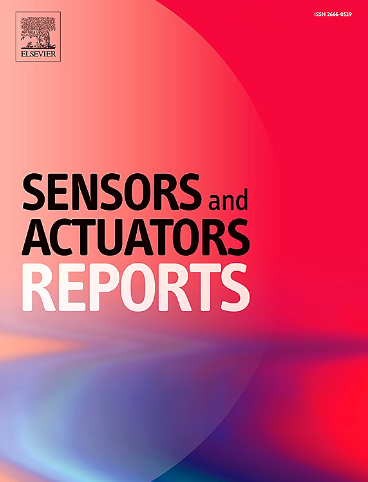Acid-resistant PVP/gold nanoparticles cluster for gastric juice-based metabolomics analysis
IF 7.6
Q1 BIOTECHNOLOGY & APPLIED MICROBIOLOGY
引用次数: 0
Abstract
This study aims to develop a surface-enhanced Raman scattering (SERS)-based technology capable of directly analyzing metabolites in gastric juice using acid-resistant nanostructure for the diagnosis of gastric cancer. Although gastric cancer has a high incidence and mortality rate, existing endoscopic examination methods have limitations such as low sensitivity and operator dependency. In this study, we fabricated nanoparticles (NPs) cluster structure using Au NPs encapsulated in polyvinylpyrrolidone (PVP) to maintain structural stability even in strongly acidic environments. The PVP-Au NPs solution mixed with gastric juice was coated using the meniscus guided deposition technique to fabricate a uniform NPs cluster, thereby ensuring high chemical stability and reproducibility of SERS signals. The acquired SERS spectra were preprocessed and transformed into barcode-format features, which were then used to train a neural-network-based machine learning classification model. In the analysis of 121 gastric juice samples, the model accurately classified gastric cancer with a sensitivity of 91.7 % and a specificity of 91.7 % in the test set. This study demonstrates the potential of a high-precision gastric cancer diagnostic platform that integrates an acid-resistant PVP-based Au NPs cluster structure with machine learning classification and suggests its possible expansion as an auxiliary diagnostic tool for screening high-risk groups and predicting future prognosis.
耐酸PVP/金纳米粒子簇用于胃液代谢组学分析
本研究旨在开发一种基于表面增强拉曼散射(SERS)的技术,利用耐酸纳米结构直接分析胃液中的代谢物,用于胃癌的诊断。虽然胃癌的发病率和死亡率很高,但现有的内镜检查方法存在敏感性低、对操作者的依赖性等局限性。在本研究中,我们将金纳米粒子包裹在聚乙烯吡咯烷酮(PVP)中,制备出纳米粒子簇状结构,即使在强酸性环境中也能保持结构的稳定性。将与胃液混合的PVP-Au NPs溶液采用半月板引导沉积技术包被,形成均匀的NPs簇,从而保证了高化学稳定性和SERS信号的再现性。对采集到的SERS光谱进行预处理并转化为条形码格式的特征,然后用于训练基于神经网络的机器学习分类模型。在对121份胃液样本的分析中,该模型对胃癌的准确分类,灵敏度为91.7%,特异性为91.7%。本研究证明了将基于耐酸vpp的Au NPs聚类结构与机器学习分类相结合的高精度胃癌诊断平台的潜力,并表明其可能扩展为筛查高危人群和预测未来预后的辅助诊断工具。
本文章由计算机程序翻译,如有差异,请以英文原文为准。
求助全文
约1分钟内获得全文
求助全文
来源期刊

Sensors and Actuators Reports
Multiple-
CiteScore
9.60
自引率
0.00%
发文量
60
审稿时长
49 days
期刊介绍:
Sensors and Actuators Reports is a peer-reviewed open access journal launched out from the Sensors and Actuators journal family. Sensors and Actuators Reports is dedicated to publishing new and original works in the field of all type of sensors and actuators, including bio-, chemical-, physical-, and nano- sensors and actuators, which demonstrates significant progress beyond the current state of the art. The journal regularly publishes original research papers, reviews, and short communications.
For research papers and short communications, the journal aims to publish the new and original work supported by experimental results and as such purely theoretical works are not accepted.
 求助内容:
求助内容: 应助结果提醒方式:
应助结果提醒方式:


